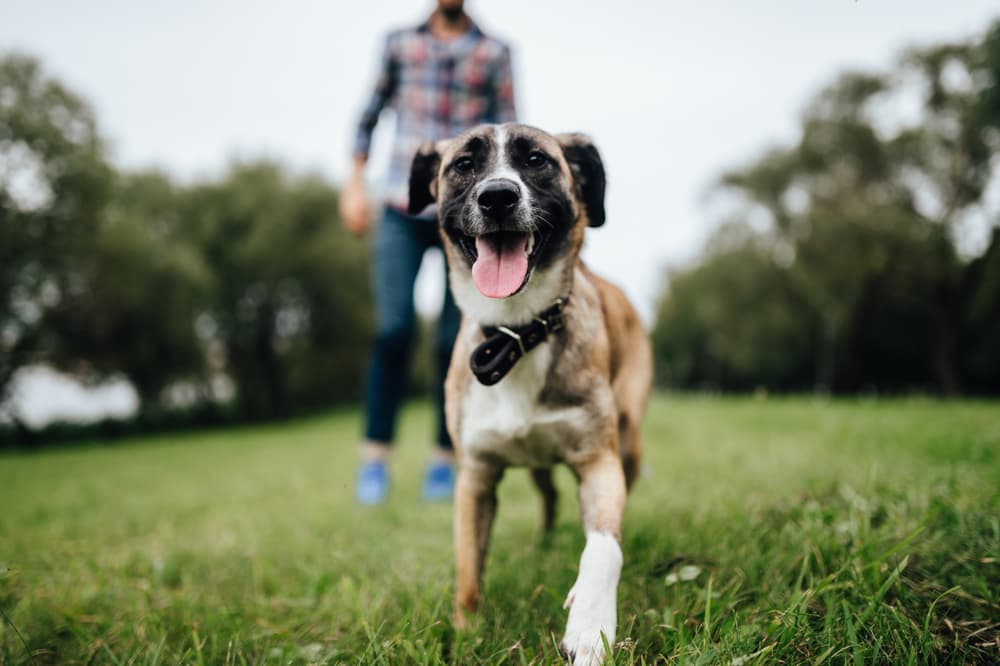Never Lose a Pet: 8 Steps to Take NOW

Losing a pet is a scary experience—and unfortunately, it’s not uncommon.
According to a study by the ASPCA, 15 percent of pet guardians have lost a dog or cat. While 85 percent of these pets were eventually recovered, some never found their way home.
But not to worry. There’s plenty you can do today to ensure your four-legged friend remains by your side. Consider these easy, expert tips for preventing lost pets.
Update Your Pet’s ID Tags and Microchip
First and foremost, it’s important to make sure your pet has proper identification. Should your dog or cat become lost, this is their ticket home.
Liv Hagen, manager of shelter behavior services at Animal Humane Society in Minnesota, stresses the importance of having two forms of ID: a traditional collar tag with up-to-date contact information, and a registered microchip.
“We frequently get stray animals without any form of ID, or out-of-date contact information,” says Hagen. “Your pet should wear a collar and ID tags at all times. ID tags allow anyone who finds the animal to contact the owner to reunify the pet.”
Microchips, while valuable, should be considered back-up identification.
“Microchips are a good secondary form of identification,” says Hagen. “With a microchip, the finder has to take the animal into a shelter, animal control facility, or vet to get the chip scanned.”
Perfect the “Recall” Command

Ideally, dogs should be leashed when not in an enclosed area. However, some pups simply can’t resist chasing small animals, while others will run when startled.
For times like these, proper training can save your pet.
“Training a strong ‘recall’ is a great safety behavior for most dogs,” says professional dog trainer Kristi Benson. “Dogs who have been trained to understand that coming to their owner is an exciting thing will be much more likely to turn around and head back if they hear their recall cue.”
Teaching a reliable recall requires time and plenty of positive reinforcement (after all, returning to you has to be more fun than catching the squirrel). Benson recommends finding a local class that focuses on reward-based training.
Secure Your Backyard
If you have a yard, a secure fence is essential. In general, fences should reach all the way to the ground and be high enough that your dog can’t jump over.
However, some dogs are ambitious escape artists. Until you know your pup’s tricks, never leave him alone outside.
“For the first few weeks, you should supervise any new dog to make sure they aren’t a little Houdini,” says Benson. “Some dogs will slip under fences, some will dig, and some will climb. Address each of these issues as needed.”
If you have a digger, you may need a cement base for your fence. Dogs who climb can be deterred with smooth-board fences or specialized, escape-proof extensions.
Keep Cats Inside

According to the ASPCA’s study, cats who went missing were significantly less likely to find their way home than dogs. The easiest way to prevent your cat from wandering off? Keep the outdoors off-limits.
“For cats, roaming freely can be quite dangerous and can dramatically shorten their lifespans,” says Hagen. “Most cats are just as happy living the indoor life if they have plenty of enrichment.”
If you’d like to give your cat a safe taste of the great outdoors, consider leash-training or investing in a secure catio, suggests Hagen. (Keep in mind that even the most robust fence can be no match for a crafty cat, she adds.)
To discourage any unauthorized roaming, ensure all open windows are equipped with secure, pet-safe screens. Cats—as well as dogs—are happy to hop out any exit available.
Have a Party Plan
Parties can be dangerous for pets. Stealthy pets can easily slip through an open door, and they may go unnoticed in the hustle and bustle.
“If you are hosting a gathering, consider keeping your pet in a different part of the house or a room so they can’t sneak out the door when people are coming and going,” advises Hagen.
If you have overnight guests, make sure to brief them on your pets’ routines and rules.
Provide Enrichment

Bored dogs are more likely to seek out adventure. If your pup is attempting to escape, consider what’s missing at home.
“If a dog feels the need to escape, this can be a sign that the owner is not meeting the dog’s exercise and enrichment needs,” says Benson. “A dog who is getting cardio-pumping exercise, interesting walks, food puzzles, and chew toys will be much less likely to wander—they’re getting all the good stuff they need right at home.”
Keep a List of Nearby Shelters
With lost pets, it’s important to act quickly. To prevent wasting valuable time, have a list of nearby shelters handy—these will be your first stop in a worst-case-scenario situation.
“If your pet goes missing, make sure to check the local animal shelters, animal rescues, animal control facilities, and vet clinics in your area,” says Hagen.
While a quick phone call may be all that’s needed, you should also plan to visit the shelters in person to make sure your pet didn’t slip under the radar, adds Hagen.
Keep Current Photos

In the age of the camera phone, most of us have dozens (or, ahem, hundreds) of photos of our pets. But even so, do a quick scroll through to make sure you have clear, current, full-body photos that could help strangers identify your pet.
“We suggest posting photos on neighborhood forums, such as Nextdoor, Facebook, and other local websites,” says Hagen. “Once your pet has been found, be sure to take down any postings or flyers.”









